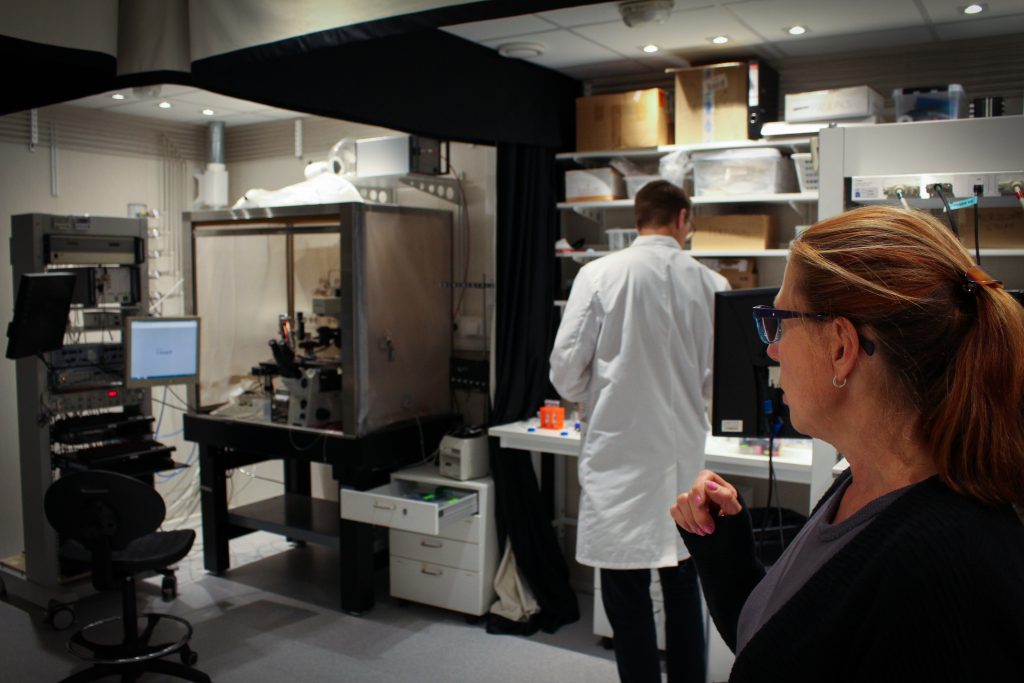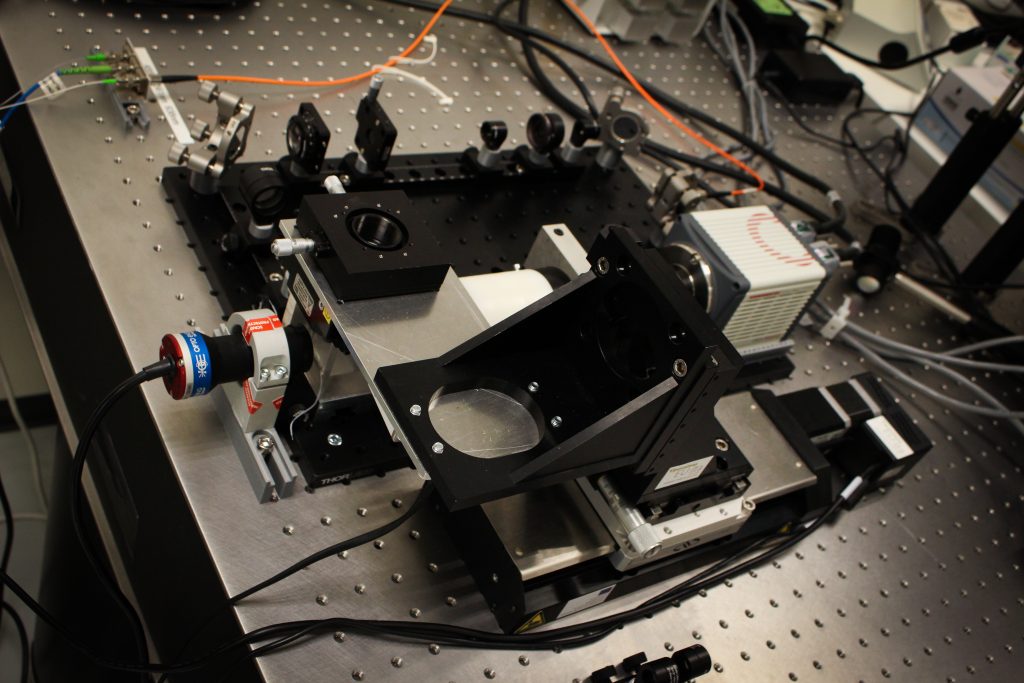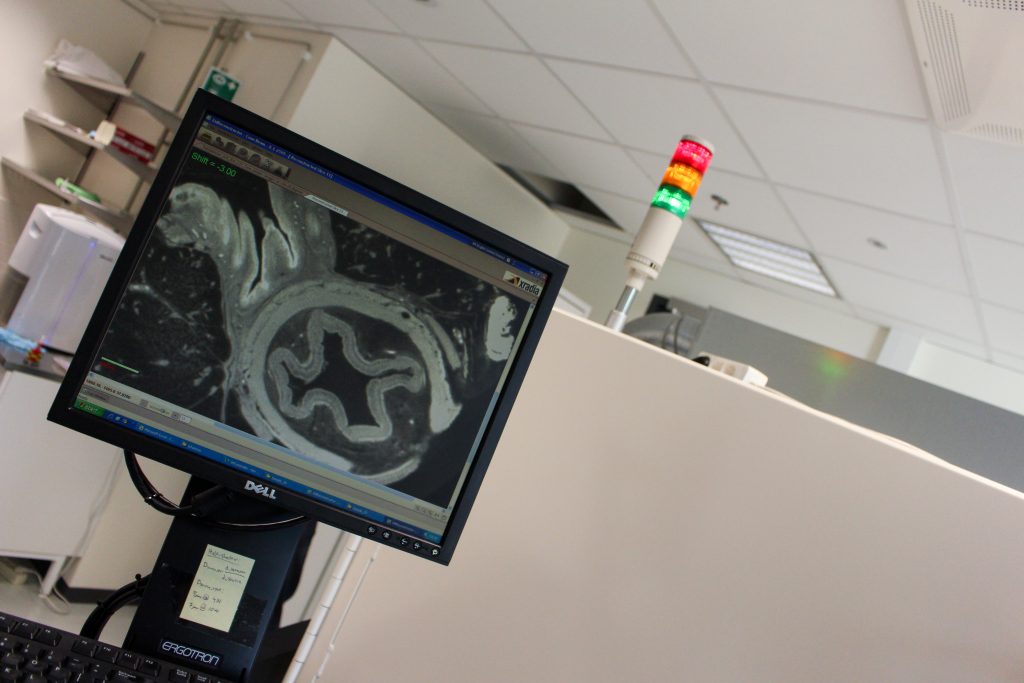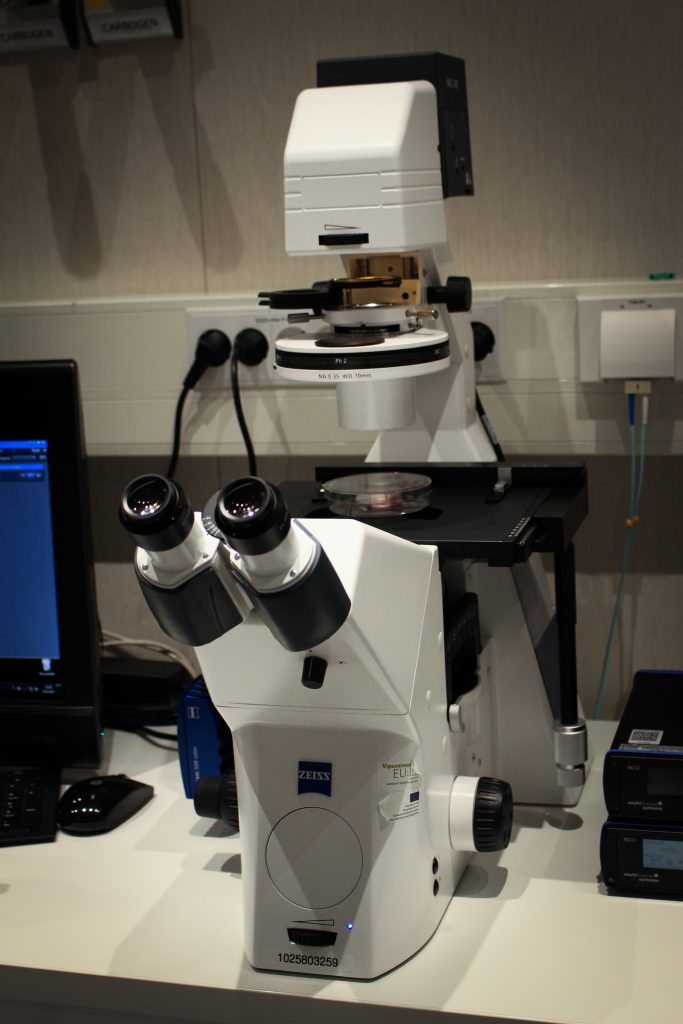Health and technology hand in hand
In order to create new and ground-breaking innovations, the researchers have to focus on their projects for a long time. The research and students at the BioMediTech institute in Tampere are working on projects whose concrete benefits might not manifest themselves until their children’s or grandchildren’s time. Still, working at the BMT institute and the research carried out there is attractive, and students flock to the institute for theirs studies.
About a decade ago, various people and organizations in the Tampere region began to ponder about how they could create a new innovation environment that could take advantage of the region’s strengths. The idea was to promote and increase research activities and opportunities in the fields of biology, medicine, and biomedicine technology, and to help commercialize the research findings. In addition to these, there was a desire to increase the cooperation between the universities, and between the companies and the institutes of higher learning.
Traditionally, the strengths of the Tampere region have included cutting-edge knowledge of technology and engineering, thanks to the robust degree programmes and research activities within the Tampere University of Technology. To complement this more traditional approach to technology, an idea sprang up that would combine the doctors and humanists of the University of Tampere, and the engineers from TUT. As a result, the BioMediTech institute was born which operates in many different sectors and fields.

“BioMediTech can perhaps be seen as an embryonic stage of the Tampere3-project, as it was born both from the UTA and the TUT”, says Minna Kellomäki, the dean of faculty of Biomedical Sciences and Engineering. Tampere3 is an ambitious project where the University of Tampere and the Tampere University of Technology will join forces to create a new university foundation, which in turn will buy the Tampere University of Applied Sciences for the city of Tampere. Looking at the success of the BioMediTech institute, the belief in the project soars. At the heart of the BMT institute has been from the very outset the creation of an encouraging innovation setting and environment in the Tampere region.
A group of heart cells beating.
“The aim has been to bring together experts from biology, engineering, technology and medicine but also to enable the cooperation between the researchers and the people from the business sector, and to provide assistance in commercialising the research findings”, Juho Väisänen, the leader of the research group Human Spare Parts explains.
Within the context of Finland, the operations of the BioMediTech institute are formidable, as it offers for its students five different study programmes. In addition, students can pursue their doctorate in two different programmes. As for the research side of things, currently there are three large-scale programmes: FinMIT, Prostate Cancer Research Center and Human Spare Parts. The focus on research is clearly shown by the figures, as even in 2014 BMT contained in total 28 different research groups, and 350 researchers.
BioMediTech is engaged in research dealing with various themes including, for example, computational biophysics and systems biology, biomaterials, biotechnology, images, signals and models, mitochondrial research, immunology, measurement and stimulation systems and methods, and regenerative medicine. These research activities are also open for the students of the institute.

International outlook
The institute received yet another feather in its cap in 2017 when the Academy of Finland chose the Body-on-Chip research consortium, headed by Kellomäki, as one of its Centers of Excellence in Research. The funding guarantees the continued activities of the Human Spare Parts research programme. The aim of the programme is to combine biology and synthetic constructions, which can help in developing new medications, Kellomäki explains.
The role of the regional actors has been significant from the very start of the institute stretching back even before it gained its present name, according to Jari Hyttinen, a professor and a project manager within the institute.
“The role of the financiers and sponsors has been great, especially as our research requires such a long-term timeframe. We also appreciate the mental support offered to us by the various actors”, Hyttinen continues.
The global trends of aging populations, diseases of affluence, and the need for new innovations are all reasons why the research aimed at medicine, and health and welfare is deemed highly important even in Finland. The aim of the BMT institute is to come up with new points of view, perspectives and ideas to combat these topical problems. Solutions for the problems are sought out through, for example, the Development of BioMediTech’s international operations in Euregio -project in which the aim is to promote the universities in the Tampere region in the global context, and to further develop the innovation abilities of the institute.
BioMediTech’s target is the so-called Euregio-region, a triangle made up of Belgium, the Netherlands, and Germany. One of the most significant international concentrations of corporations, start-ups, and research institutes dealing with biotechnology are situated within the area.
“We definitely want to be part of the triangle. Financing the research programmes is vital to their success and the area in question offers great settings for receiving them. The advantages offered by the area also include the short distances between the various actors, the substantial number of actors involved, and a culture that is supportive of innovations”, Katriina Aalto-Setälä, the leader of the BMT’s heart research group explains.
The differences between the cultures of innovations are made visible in the flexibility of the financing instruments, according to Aalto-Setälä. For example, the University of Ghent in Belgium has a four-tiered system for financing research. The tiered system enables the applicant to have different options and choices during the application process. At the same time, the system lowers the risks involved for the financier, and offers them more flexibility when it comes to the various processes of financing.
“Within the framework of the project, we are engaged in academic and educational cooperation which includes for example exchanges designed for our personnel. We have excellent equipment and research infrastructure which entice international actors to come here”, Kellomäki describes. In addition to the increase of cooperation and the creation of international networks, the project aims at bringing innovative ideas about the financing models and procedures to Finland.
During the previous years, the BioMediTech institute has put a lot of effort and resources in obtaining world-class infrastructure and equipment which enable, for example, the research on groups of cells located in the heart. The investments also beget additional investments and research funding, Hyttinen says.
As one might imagine, the investments towards building the infrastructure has been no small feat. Instead, the BMT institute has worked tirelessly and commendably towards procuring top of the line equipment and the skills and knowledge related to them. Previous projects have been successful in accomplishing these formidable tasks, and they include BCC – The Development of Bio Measuring research and technology, The Development of the BioMediTech Research Infrastructure, Developing the Clinical and Regulatory Processes Within BioMediTech, and BioPro: The path of innovations in the Bio Sector from research to Product Development.
The projects’ goals ranged from enhancing the research infrastructure of the institute and the commercialization of its research findings to the new innovation techniques used within the institute. All in all, BioMediTech has received in total around 4,5 million euros of ERDF-funding during the previous and the ongoing programming period.

Internationality is considered an important aspect in the BMT institute. Katriina Aalto-Setälä hopes that the students would be more enthusiastic about the prospects and opportunities of participating in student exchanges or doing their internships abroad. According to her, the institute receives more exchange students than it is currently sending out.

Smart health
New and intelligent solutions will be made ever more visible in the Tampere region as the city of Tampere has decided to focus on digitalization and the opportunities it offers in the city’s Smart Tampere-programme. The programme cuts through all of the city’s functions and services beginning at construction and infrastructure, and ending with education and social and health services.
The coordinator for the thematical section of Smart Health is FinnMedi Inc., which has accumulated three decades’ worth of experience in promoting health and welfare. The aim of the company is to help in the commercialization of research findings and to create co-operational networks between the various players in the field. FinnMedi is working closely together with the Pirkanmaa hospital district and the Tampere University Hospital. The BioMediTech institute is a natural fit for the cooperation, as all three entities are situated in the same area in Tampere’s Kauppi.
“The aim of the Smart Health-programme is to find solutions from many different participants to the problems arising in the sector of health and welfare. In the background is the upcoming health and social services reform which opens up new opportunities and possibilities for the different actors”, explains Reijo Itkonen, development director for FinnMedi.
The reform unlocks the field for new companies and start-ups, which Itkonen is supporting and helping through HealthHUB, which is operated by FinnMedi.
“The objective of HealthHUB is to offer workspaces and the opportunity for companies and other actors in the health sector to find partners and to engage in development work together. The main ideas is to create self-guiding theme groups and to make available for them the contacts and special knowledge generated by FinnMedi”, Itkonen describes.
The rapid growth and the extent of the HUB’s operations have come as a positive surprise for Itkonen. There are currently around fifty different companies and start-ups. What is unique about HealthHUB is that it has at its disposal FinnMedi’s know-how and its wide networks of clinicians. With these, the start-ups can more easily begin their operations and expand to the markets as opposed to them having start from scratch, Itkonen explains.
In the spring of 2016, the Pirkanmaa hospital district signed a local co-operational agreement with Roche AG, which is the largest corporation in the field of biotechnology. The collaboration extended to encompass FinnMedi and, consequently, HealthHUB.
“As a forum, HealthHUB has proven its value and we have noticed that the people operating there are very active and desiring of new partners”, says Tommi Liesniemi the healthcare district leader at Roche Pharmaceuticals. As a testament to the successful collaboration, a co-operational agreement was made public in August 2017 between Roche and Huoleti Ltd from HealthHUB.
The founding members of Huoleti, Carita Savin and Maria Lipsonen, have created a service in the form of a smartphone application, which offers support and peer-networks for people with serious illnesses, and their close friends and relatives. The goal is to bring together the helpers and those in need of help through an app. Huoleti conducted a pilot phase of the service with the help from cancer rehabilitees and volunteers from a university of applied sciences.
“The service enables people to find help in walking the dog or to do the shopping. Through these small acts of help we are ensuring that the rehabilitee or their immediate family and friends do not have to waste resources on the day-to-day activities, and instead they can focus on getting better”, Savin explains.
The users of the services are anonymous on default and can easily change their levels of networks and their level of anonymity on an axel of public-private. The service brings the people together through locational information. These are not, according to Savin, exact for security reasons, rather the helpers receive the exact information only after both parties have accepted the offer for help.
For Lipsonen and Savin, HealthHUB offered exceptional contacts and networks towards the city of Tampere, among others. In addition to the resources offered by the HUB, Huoleti has been able to create contacts to actors, which would have been beyond the reach of a single start-up, Savin says.
Jukka-Pekka Pirhonen, the chief technology officer for Brain Care Ltd says that he first got wind of HealthHUB through FinnMedi. He emphasises the importance of the HUB as a meeting place through which a young start-up can gain respectability and credibility when it is approaching potential partners and clients. The start-up represented by Pirhonen offers a new tool for the tracking of epileptic seizures which can lead to, for example, fewer visits the patient makes to the doctor, and the more efficient flow of information.
“Our mobile application aims at bettering the quality of life for patients and to streamline the use of resources on the parts of the patients and the doctors. The consultation hours required by patients with epilepsy are counted in the hundreds, and we wanted to improve the situation. The application was granted the medical CE mark, which is highly valuable to us. In this process too, the help and expertise of HealthHUB was critical”, Pirhonen describes.
Issues relating to security are taken very seriously within the company. As a partner in this regard is the Tampere-based Adalia Ltd which is certified by Valvira, the Finnish regulator. In the future, Brain Care wants to provide a subdermal implant, which will monitor the epileptic seizures. This, in turn, would help the treatment of the condition by the patients themselves and the health care professionals, Pirhonen explains.